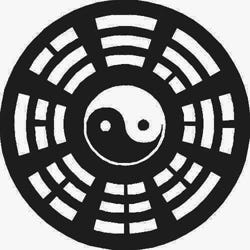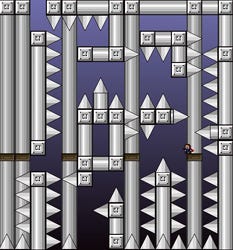Trending
Opinion: How will Project 2025 impact game developers?
The Heritage Foundation's manifesto for the possible next administration could do great harm to many, including large portions of the game development community.
What's the point of designing games? Veteran educator and designer Ernest Adams examines fun, enjoyment, and personal fulfillment to reveal the key, uplifting tenets of game creation.

[What's the point of designing games? Veteran educator and designer Ernest Adams examines the concepts of fun, enjoyment, and personal fulfillment to reveal the key, uplifting tenets of game creation.]
The Japanese language uses suffixes to modify the word that precedes them. Two of these suffixes are -do and -jutsu. The -do ending means "the way of..." whatever it is modifying, while the -jutsu ending means "the skills (or methods, or techniques) of..."
Consider the words jujutsu and judo. They refer to two different approaches to a particular martial art, a form of unarmed hand-to-hand combat that concentrates on grappling, pinning, and throwing. Jujutsu is the older and more brutal form, intended for lethal combat. Judo is a sport that derived from jujutsu.
When appended to the name of a martial art such as judo, the -do ending refers to a philosophy behind the art -- a set of values that are intended to guide the combatant in the proper use of the jutsu, or techniques, of battle. The Japanese word do is cognate with the Chinese word tao, which also means "way" or "path", and also connotes a mental or moral discipline rather than a purely practical collection of rules.
It seems to me as if this distinction could apply equally well to game design. Game design has many jutsu, and these are well-known. Challenge, growth, choices, balance, pacing, novelty, surprise, risk/reward, social interaction, storytelling, creative play -- all these are techniques we use for creating entertainment. But what values guide our use of these jutsu? What is the tao of game design?
The first answer that the novice will give, undoubtedly, is "give the player fun." I've already explained why fun is too limited a concept on which to base a medium as powerful as ours, so I won't bother to do so again. Broaden the idea of fun a little and you get enjoyment.
But I find even enjoyment is too restrictive. Broaden it further, and we come to entertainment. For the most part, we want to give the player entertainment -- whether it's pure fun or some more complex kind of experience.
Video game design is not analogous to martial arts, however. In martial arts the goal is always victory, and victory is precisely defined -- the death or submission of the enemy, or his defeat according to a system of rules adjudicated by referees. Different jutsu will lead to victory over different kinds of enemies, but victory is defined the same way no matter who the enemy is.
 That's not true for entertainment, because different people like to be entertained in different ways. They enjoy doing different things, they like to face different challenges, and they like to experience different emotions.
That's not true for entertainment, because different people like to be entertained in different ways. They enjoy doing different things, they like to face different challenges, and they like to experience different emotions.
The tao of game design cannot be "give the player entertainment," because there are no rules about how to entertain everyone. Let's look at it another way.
Most art forms (painting, dance, music, film, theater, literature and so on) are purely expressive. The artist expresses; the audience observes. The audience may also contemplate, criticize, interpret, applaud, or reject the art, but the one thing they cannot do is change it.
Video games aren't like that. They're interactive. The player and the designer collaborate to create the experience that the player will have. The designer has most of the power, of course: she constructs the world, establishes the actions available to the player, and defines the goals towards which he will strive.
And yet in spite of the designer's pre-eminent role, the game is nothing without the player. A video game that nobody plays is an empty thing, a mere collection of machine code. To be meaningful, the game must be played.
In fact, the game doesn't really exist until it is played. By convention we refer to the software as "the game," but in truth, the software is not the game. The game is the act of playing. It comes into existence when the player starts up the software and crosses into the magic circle.
Creative works can be art or they can be light entertainment, or something in between. It's a continuum with no clear boundary, but some works are closer to one than the other. If a game is more art than light entertainment, then it is more about the designer than it is about the player.
Art requires an artist, and those few games that have consciously striven to be works of art have been about what the designer wants to say, not what the player wants to do. Great art says new and profound things, and someday a video game will deserve to be called great art.
If a game is more light entertainment than art, then it is usually made for sale and optimized to be enjoyable by as many people as possible -- sometimes at the behest of the marketing department, and in spite of the designer's personal desires. Innovation and depth take a back seat to mass appeal.
As creative people, we all have to decide where we want to lie along that continuum -- between breaking new ground with our aesthetic vision and seeking to please as many people as we can. With the presentational arts, especially those created by a single individual, the issue is reasonably clear.
Thomas Kinkade ("Painter of LightTM"), for example, paints for the mass audience. He challenges no one; he says nothing; he breaks no new aesthetic ground. His works are quintessential light entertainment: decorative, but not deep.
At the opposite end of the continuum, many contemporary artists create works that few people understand and nobody would want in their living room. They make no effort to cater to an audience. Their works are strikingly expressive, but not at all attractive.
Video games complicate this issue because we must involve the player. It's not possible to make a completely solipsistic video game. A designer can't make a game that is purely personal expression; she must give the player something to do, or it's not a game at all. As a result, the tao of game design can't be described in a single sentence or a unitary idea.
The tao must partake of the eternal yin-yang of the player and the designer. Without the player, there is no game. Without the designer, there is no game.
Each player contains with himself a game designer, because in playing he seeks to understand the game's design. Each designer contains within herself a player, because in designing she seeks to understand how the player will play it. Neither is certain of the other, but both must strive.
The tao of game design, then, requires two precepts: know thyself, and know thy player.
To know ourselves, we must understand what we seek to express or explore through game design. Do we want to set a puzzle to be solved? Do we want to send a message to be heard?
Do we want to create a system to be studied, or a landscape to be explored? Or do we want to challenge a player to face us in virtual combat? And what can we bring to this process? What are our strengths, our weaknesses, our desires and preferences, our talents? Have we mastered all the jutsu of game design?
Students frequently ask me what aspect of game development they should go into -- art, programming, design, and so on. I can't answer these questions for them, because I don't know what they like to do and what they're good at doing. Only they can decide, and to make that decision, they must first know themselves.
My other precept, know thy player, may seem impossible given that we don't know who will play our games. But just as the designer inside the player's head is a hypothetical person (after all, in reality design is usually a collaborative process), so the player in the designer's head is a hypothetical person. My preferred approach to game design, the player-centric approach, calls for the designer to envision a representative player and to accept a duty to empathize with that player.
You may define the characteristics of your representative player any way you like. You can decide, for example, that your representative player is the hardest of the hardcore, and build a game that only such a person would enjoy.
 This may have commercial consequences, of course; a game so difficult that only 5% of players can get through it is unlikely to be a success in the marketplace. But the decision is yours.
This may have commercial consequences, of course; a game so difficult that only 5% of players can get through it is unlikely to be a success in the marketplace. But the decision is yours.
All I ask is that, once you have defined your representative player, you think about him. Understand him. Know his desires. Then, when you know your player, you should test every game design decision by asking the question: "How will my player react to this?
In my teaching I have tended to emphasize know thy player more than know thyself, because I feel too many students come to the process with two false preconceptions: First, that game design is a primarily expressive process in which their own desires should dominate; and second, that they are themselves the ideal player for their game.
This is fair enough if they themselves are the only people who will ever play their game, but most designers want other people to play their game as well, and that means thinking about what will entertain them.
Know thy player is doubly important when the game is one that the designer would not choose to play herself -- a game for small children, say. When you make games for someone very unlike yourself, you can't rely on your own instincts. You have to study your audience.
Know thyself, know thy player. These together are the tao of game design. Like yin-yang, they are opposing, mutually rooted in a common phenomenon (the game), and each influences the other in the dance of creation.
[Attention, regular Designer's Notebook readers! It's time once again for another edition of Bad Game Designer, No Twinkie! If you'd like to contribute to this, the ninth edition of the long-running game design gripe-fest, mosey on down to the No Twinkie Database to see if your complaint has already been covered, and if not, send me word by writing to [email protected]. I can't promise to use them all, but the more flagrant the error, the more likely it will be to make it in. Due credit will be given, of course.]
Read more about:
FeaturesYou May Also Like